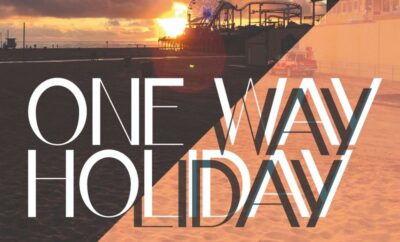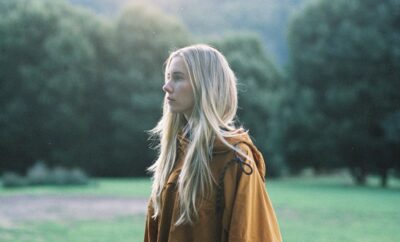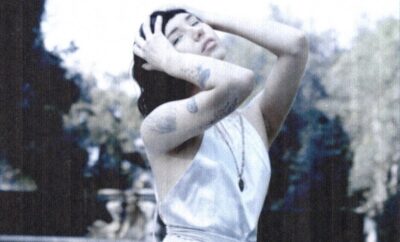 Marie Michele Bouchard
Marie Michele Bouchard
Interviews
Cabin Fever Orchestra – Lasting Dream
By: Moriah Thomas
Q) How would you describe Cabin Fever Orchestra’s sound?
A) Perhaps it’s the television composer in me, but the music we’ve made to date often sounds like it’s conveying some otherworldly musical landscape or an open-ended narrative. Whether I’m painting a musical picture of quiet contemplation or majestic wonder, I aim at making music that feels imaginative and sincere.
Q) Who are some of the artists that influenced you as a musician?
A) There are far too many influences in my head to make a definitive list, but today my top three are probably Thomas Newman, Germaine Franco and Harry Gregson-Williams.
Q) In the visual for “Lasting Dream” it is beautiful to see the array of art style. It in a way lends to the aspect of growing up like the art depicts. Did you have a specific idea in mind for how you wanted each individual art piece to look?
A) It’s so wonderful that you picked up on that. Yes! I have a five-year-old at home and our house is quickly filling up with these wonderful, colorful kid drawings, which made me reflect on the drawings I used to make in my own school journals from kindergarten to about grade three. I wanted to start off “Lasting Dream” in that place – in the art style of a young child dreaming about their future life, filled with big adventures and kid-centric interests (like my former obsession with dinosaurs), but I also wanted the drawing style to pivot as the narrative of the song pivots – to have the drawing style mature as those dreams change.
Q) Knowing the UP marriage montage was partially inspiration for this adds a new layer of emotion. When watching it for the first time did you know you wanted to create something inspired by it?
A) No, it was a welcome surprise! For whatever reason, this song just fell right out of my mouth after watching that film. I sat down at the piano later that evening, not to write, but just to musically wander for recreation. Suddenly, I found myself following a trail of breadcrumbs once I sang the first line. The song emerged near-complete almost immediately, which is really rare for me. It always feels like a bit of a gift when a song comes to life without too much concerted effort.
Q) Are there other movies you’ve felt inspired by musically?
A) Definitely. I think some of my lifelong artistic inspiration came from my love of The Neverending Story. That movie still influences how I think about human imagination and its relationship to art. It disturbed me in places, made me curious, put me in a state of wonder, a state of joy – it made me feel a whole lot of things when I was young, and those feelings have endured. I think I’ve also been very inspired by the music written for “Star Trek” – particularly “The Next Generation.” I still love the opening theme of “Deep Space Nine” and I do think you can hear my fandom in places – not specifically relating to any one piece, but I think you can hear an intention to communicate some of the same feelings in my music. I think fantasy and science fiction thrive when the author has a wild imagination, and I do aim to make imaginative music.
Q) “Lasting Dream” serves as your first time singing on a track. What felt different about this song that called for that change?
A) I should mention that I do sing a lot in my work as a composer, on Daniel Tiger’s “Neighbourhood” for example, on a slew of other shows and with my other project indie-pop project Kodiak Arcade, but this song shared an instrumentation palette with the rest of the Cabin Fever Orchestra material. “Lasting Dream” just seemed to fit into the tapestry we’re still weaving with Cabin Fever, in a way that felt intuitively right to me. It’s true that I anticipated that Cabin Fever would always be a strictly instrumental project, but some rules are made to be broken, I guess.
Q) I know “Lasting Dream” was finalized as a tribute to your parents 50th wedding anniversary? What was the moment like playing it for them the first time?
A) There were some tears and hugs involved. They were really touched, and they love that they have a lasting souvenir of their personal milestone. I’ve been so moved watching other people hear the song for the first time. A lot of people have needed tocollect themselves a bit before talking to me about it. I always feel like we’ve genuinely connected through the art when anyone has a strong emotional reaction.
Q) For future projects, do you intend to have your own vocals on them as well?
A) I decided to break this rule once more on our most recent release “No Reason to Change.” I also recorded this for the same event and, again, there were many crossover collaborators who have contributed to Cabin Fever that helped to turn “No Reason to Change” into the song that it is. Cabin Fever Orchestra often paints a more majestic musical picture, with larger ensembles of players, but “No Reason to Change” felt like an opportunity to explore arrangement ideas that felt more intimate. Usually, my pop songs and my orchestral works are so different from one another that they don’t sound alike in the slightest, but this song represents the intersection of both of those sides of my musical voice, where a listener can hear how both projects would’ve naturally arisen from the same musical mind. I hear both projects distinctly and I think this song somehow bridges those two distinct musical universes.
Q) Having worked as a composer for many, many projects. What is the difference in your approach to that work vs this passion project?
A) When I’m working as a composer, it is far less of a personal expression and more of a sort of musical craftsmanship in service of someone else’s ultimate vision. It’s teamwork on a large scale. When I’m composing, many of the variables have already been decided for me. For example, I’m often making music that follows the twists and turns of a conversation. My task is to make that conversation feel more deeply like what the acting and the script are already conveying. When I’m writing for myself though, I’m left with a blank arrange page and an opportunity to express whatever I’m feeling as an individual – to follow my own barometer of greatness instead of making something for someone else. To me, this process feels like musical exploration and recreation and, oddly, following my own barometer always seems to fertilize my work for television.
Q) The cover art and visualizers for the singles released this year all seem to tie together. It almost reminds me of a museum curation. What can be said about this new era of music?
A) So nice to hear that you feel that way! I’m glad that they tie together to your eye. To me, that means you can see the overall style that I’m building on with each release – that thread of continuity that expresses a bit of me personally. The cover art and all of the visualizers for each track have been another opportunity for exploration and recreation for me – an exploration of imagery instead related to music. So often in my work for television I’m trying to find sounds that support visuals. With this project, I love that I get to make so many visuals to depict the mental states of my personal music.
Q) What other projects do you have in the works? Possibly an EP or an album?
A) I’m busily writing for another session with Czech National Symphony Orchestra at the moment, and I have a project in mind for next year involving a smaller ensemble that should let me explore the virtuosity of a few really great local performers.
Q) Who are some dream collaborators you would like to work with?
A) I’ve always admired the work of Jónsi Birgisson, both with Sigur Rós and on his own personal material. I got a chance to see him perform with Sigur Rós backed by the Toronto Symphony Orchestra recently and I came away thinking that we’ve never been more musically aligned than we are now, and I’ve been a fan for at least twenty years. He’s not afraid to chase beauty or go to darker places. I feel the depth of his music intuitively, in a way that’s rare – even when he’s singing in a language I don’t speak. The music just speaks for itself.
Q) What would you like to say to fans and supporters of you and the music that you make?
A) I can’t thank them enough for all of the kind messages of encouragement. It has amazed me to see so many people from all over the globe connecting with the music. It makes me feel alive and gives me a reason to keep mining my own personal musical voice in my spare time. From the bottom of my heart, I just want to say thanks.





You must be logged in to post a comment Login